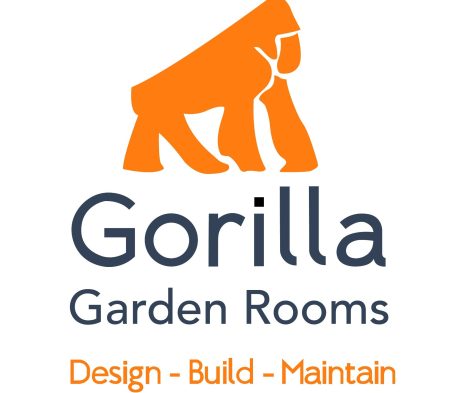
What are you allow to do?
Below is guidence from the govenment planning portal with in depth information on what can be installed
Outbuildings Permitted development rights
"Outbuildings are considered to be permitted development, not requiring an application for planning permission, provided all the conditions are met. The rules governing outbuildings apply to *sheds, greenhouses and garages as well as other ancillary garden buildings such as swimming pools, ponds, sauna cabins, kennels, enclosures (including tennis courts) and many other kinds of structure for a purpose incidental to the enjoyment of the dwelling house. This includes a container used for domestic heating oil or petroleum gas. This guide offers a step-by-step walk-through of those limits and conditions.
1) On designated land, outbuildings to the side of the house are not permitted development.
2) Outbuildings are not permitted development within the grounds of a listed building.
3) In national parks, the Broads, Areas of Outstanding Natural Beauty and World Heritage Sites the total area to be covered by any outbuildings more than 20 metres from ANY WALL of the house must not exceed 10 square metres to be permitted development.
4) Outbuildings are not permitted development forward of the principal elevation of the original house. The term original house means the house as it was f irst built or as it stood on 1 July 1948 (if it was built before that date).
5) Outbuildings and other additions must not exceed 50% of the total area of land around the original house. Sheds and all other outbuildings and extensions to the original house must be included when calculating this 50% limit.
6) To be permitted development, any new building must not itself be separate, self-contained, living accommodation and must not have a microwave antenna.
7) Outbuildings must be single storey with a maximum eaves height of 2.5 metres and maximum overall height of 4 metres with a dual pitched roof, or 3 metres in any other case.
8) If the outbuilding is within 2 metres of the property boundary the whole building should not exceed 2.5 metres in height.
9) Balconies and verandas are not permitted development. Raised platforms such as decking are permitted development provided they are no higher than 300mm.
10) Containers, such as those used for domestic heating purposes, must not exceed 3,500 litres capacity to be permitted development.
The permitted development allowances described here apply to houses, not flats, maisonettes or other buildings. You should check with your Local Planning Authority whether permitted development rights apply – they may have been removed by what are known as Article 4 directions. Other consents may be required if your house is listed or in a designated area.
Definitions of terms used in this guide ‘Incidental to the enjoyment of the dwelling house’ includes the keeping of poultry, bees, pet animals, birds or other livestock for the domestic needs or personal enjoyment of the occupants of the house.
‘Original house’ - The term ‘original house’ means the house as it was first built or as it stood on 1 July 1948 (if it was built before that date). Although you may not have built an extension to the house, a previous owner may have done so.
‘Designated land’ - Designated land includes national parks and the Broads, Areas of Outstanding Natural Beauty, conservation areas and World Heritage Sites.
What Does this realy mean?
In most cases, outbuildings, including garden rooms, fall under permitted development rights and do not require planning permission. However, this is subject to certain limits and conditions that must be met.
Key Planning Considerations:
Height Restriction: The building must not exceed 2.5m in height from the base to the roof's highest point. (All our garden rooms are designed to comply with this 2.5m maximum height requirement.)
Garden Coverage: The garden room, combined with any other buildings on your property, must not cover more than 50% of your garden area.
Usage Restrictions: The building must not be used as living accommodation.
Boundary Distances:
For garden rooms with an internal floor area of up to 15m², the building must be placed at least 0.5m from any boundary.
For garden rooms with an internal floor area over 15m² and up to
30m², the building must be placed at least 1m from any boundary.
By adhering to these guidelines, your garden room project is more likely to comply with permitted development rules. For peace of mind and clarity, always confirm your plans with your local planning authority before starting any installation.
We are here to assist you in ensuring your garden room meets all necessary requirements while fulfilling your vision.
Permitted Development: What It Means and Key Guidelines
Permitted development allows the construction of outbuildings within the boundaries of a property for purposes incidental to the enjoyment of the home. This includes maintenance, improvement, or alteration of these buildings or enclosures. However, this classification comes with specific conditions and exceptions.
Key Conditions for Permitted Development
Purpose and Location
The outbuilding must be incidental to the enjoyment of the home (e.g., not used as living accommodation).
It cannot project forward of the original house’s front elevation.
Height Restrictions
Single-story only, with maximum eaves height of 2.5m.
Maximum overall height is 4m for dual-pitched roofs and 3m for other roof types.
If located within 2m of the property boundary, the building’s height must not exceed 2.5m.
Boundary Proximity
Buildings under 2.5m in height can be placed close to the boundary, but we recommend a 500mm clearance for assembly and safety.
Usage Restrictions
No living accommodations such as kitchens, bathrooms, or bedrooms.
No TV or satellite aerials without planning permission.
Garden Coverage
Outbuildings, combined with other structures, must not cover more than 50% of the original garden area. The “original house” refers to the structure as built or as it was on July 1, 1948, including any extensions by previous owners.
Special Considerations for Designated Areas
On designated land (e.g., National Parks, Areas of Outstanding Natural Beauty, conservation areas):
Structures within 20m of the house are limited to 10m².
Outbuildings at the side of the house require planning permission.
For listed buildings, planning permission is always required.
Prohibited Features
No verandas, balconies, or raised platforms. Decking is allowed but must not exceed 300mm in height or cover more than 50% of the garden.
Important Definitions and Notes
We guarantee fast and discrete handling of all your business tasks. Our team of highly qualified employees is available day and night – because your satisfaction is our highest priority.
We need your consent to load the translations
We use a third-party service to translate the website content that may collect data about your activity. Please review the details in the privacy policy and accept the service to view the translations.

